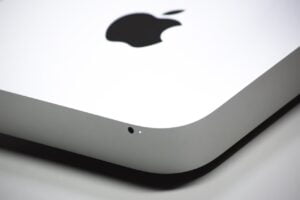
Introduction
In an increasingly digital world where space is at a premium, mini PCs have emerged as compact powerhouses of computing. They offer the functionality of a full-sized desktop in a package that can fit in your hand. Among these, Apple’s Mac Mini M2 and several other top mini PCs are vying for supremacy. This article will delve into an exhaustive comparison between Mac Mini M2 and the top five mini PCs, focusing on their pros, cons, and self-cooling systems.
The Historical Evolution of Mini PCs
Miniature computers weren’t always as powerful or functional as they are today. Initially seen as lightweight alternatives to large desktops for simple tasks such as web browsing or document editing, they have since evolved into capable machines that can handle intensive computing tasks like gaming and video editing.
Milestones in The Journey of Mini PCS
The first hint at downsizing computers came from Commodore International with its release of VIC-20 in 1980. It was followed by releases from IBM (the PC Convertible) and Compaq (the LTE), which further pushed the boundaries of what small-form-factor computers could do.
The real breakthrough came when Intel launched its first NUC (Next Unit Computing) model in 2013 – this truly kick-started the era of high-performance mini PCS. Since then numerous brands including Apple have stepped up their game providing customers with more choices than ever before.
Examining The Mac Mini M2
Apple’s latest offering to this category is Mac mini M2, following closely on its predecessor’s heels – Mac mini M1. It continues Apple’s trend towards using custom silicon over third-party chips leading to notable improvements particularly in terms of performance efficiency.
Pros
- Powerful performance with Apple’s new M2 chip
- Compact and stylish design
- Excellent connectivity options
Cons
- Pricey compared to competitors
- Limited upgradeability
Self-Cooling System
Mac Mini M2 uses an active cooling system. Given that it houses the ARM-based M2 chip, which is known for its energy efficiency and low heat generation, this makes for a quiet yet effective cooling solution.
Comparing Mac Mini M2 With The Top 5 Mini PCs
We will now compare the Mac mini M2 with five of the top mini PCs currently available in terms of their pros, cons, and best self-cooling systems.
Intel NUC 9 Extreme
The Intel NUC 9 Extreme is a small form factor PC that packs some serious punch. It’s designed for gaming but can handle just about any task you throw at it.
Pros:
- High-performance computing
- Modular design allows for easy upgrades
Cons:
- Expensive
- Larger than most mini PCs
Self-Cooling System: The NUC 9 uses an active cooling system with two fans to keep temperatures under control even under heavy load conditions.
HP Elite Slice
HP Elite Slice offers business users a sleek modular desktop that can be customized to suit different needs. It’s one of HP’s most innovative products in recent years.
Pros:
- Stylish and compact design
- Good range of customization options
Cons:
- Limited graphics capabilities
- Relatively expensive
Self-Cooling System: This PC has an integrated heat sink and uses HP’s Z-Cool technology to maintain optimal performance levels.
ASUS Chromebox 4
ASUS Chromebox 4 is a compact yet powerful device running on Google’s Chrome OS. It provides smooth performance suitable for everyday tasks.
Pros:
- Affordable
- Chrome OS offers seamless Google service integration
Cons:
- Limited storage capacity
- Not suitable for heavy applications
Self-Cooling System: It relies on a simple fan-based cooling system that works effectively in maintaining reasonable temperatures.
Dell OptiPlex 3070 Micro
Dell OptiPlex 3070 Micro is a compact, budget-friendly mini PC aimed at business users with basic computing needs.
Pros:
- Affordable
- Compact design
Cons:
- Limited performance capabilities
- Not suitable for gaming or intensive tasks
Self-Cooling System: This PC uses a single fan to keep the internals cool.
Lenovo ThinkCentre M720q Tiny
Lenovo’s ThinkCentre M720q Tiny brings power and efficiency while maintaining a small footprint ideal for cramped offices or workspaces.
Pros:
- Excellent performance
- Plenty of ports
Cons:
- Small storage space
- Costly upgrades
Self-Cooling System: The device employs an intelligent cooling engine (ICE) that balances temperature and noise level efficiently.
FAQs:
- Can Mini PCs handle high-performance tasks?
Yes, many modern mini PCs can handle high-performance tasks including gaming and video editing. - What are the advantages of Mini PCs over traditional desktops?
The main advantages include compact size, energy efficiency, and portability while offering similar functionality to larger desktops. - Is Mac Mini M2 better than other Mini PCs?
It depends on your specific requirements. While Mac Mini M2 offers excellent performance and design, it comes at a higher price point compared to some other models. - How do self-cooling systems in mini PCs work?
Self-cooling systems in mini PCs usually consist of fans or heat sinks that help dissipate heat generated by the components, thereby maintaining optimal operating temperatures. - Can I upgrade my Mini PC?
Depending on the model, some mini PCs offer upgradeability options for components such as RAM or storage. However, they are generally less upgradable than full-sized desktops.
Conclusion
There’s no one-size-fits-all when it comes to choosing between a Mac Mini M2 and other top mini PCs. Each has its strengths and weaknesses, and your choice ultimately depends on your specific needs and budget constraints. However, all these models excel in providing high-power computing in a compact form – a testament to how far mini PCs have come since their inception.








